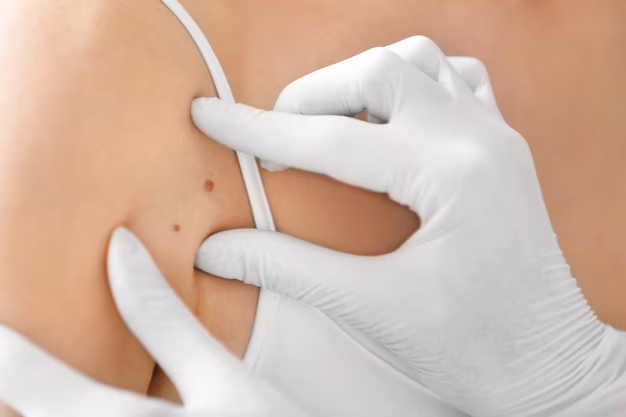Understanding the Connection: Are Skin Tags a Sign of Diabetes?
Have you ever noticed small, benign growths on your skin and wondered if they meant something more? Skin tags, while common and generally harmless, have sparked curiosity about whether they might signal underlying health conditions, such as diabetes. In today's discussion, we delve into the potential link between skin tags and diabetes, bringing clarity to a topic ripe with misconceptions and providing insights for better understanding. Let's explore what skin tags could reveal about your health and dive deeper into their potential connection to diabetes.
What Are Skin Tags?
Skin tags, known medically as acrochordons, are small, soft pieces of skin that protrude from your body. They are usually flesh-colored or slightly darker and can appear on various parts of the body, such as the neck, armpits, groin, and under the breasts. These benign growths have a core of fibers and ducts, surrounded by epidermis. Despite their presence, they are not malignant and generally do not pose health threats.
Causes of Skin Tags
While the exact cause of skin tags is not fully understood, they are believed to develop due to:
- Friction or irritation: Skin tags often occur in areas where skin frequently rubs against skin or clothing.
- Genetic factors: There is a familial tendency, meaning if your parents had them, you might too.
- Hormonal changes: Pregnant women often experience skin tags due to hormonal shifts.
- Aging: Skin tags are more prevalent as people get older.
Exploring the Link: Skin Tags and Diabetes
The presence of skin tags can sometimes raise questions about metabolic disorders, particularly diabetes. Researchers and healthcare experts have observed certain associations that make this connection worthy of exploration.
Insulin Resistance
Insulin resistance is a condition where your body's cells become less responsive to insulin, necessitating the pancreas to produce more. It's a hallmark of type 2 diabetes and has been linked with skin tags. Some experts suggest that the presence of multiple skin tags could indicate higher insulin levels, which might point to insulin resistance.
Hormonal Influence
Insulin plays a role in cell growth and the body's metabolic processes. When insulin levels are persistently high, it may trigger the growth of skin tags. This hormonal influence is especially relevant if skin tags suddenly increase in number or size.
Overweight and Obesity
Being overweight or obese is a significant risk factor for both skin tags and type 2 diabetes. Excess weight is often associated with insulin resistance, further linking skin tags with diabetes. The presence of skin tags alone shouldn’t be alarming; however, it's worth considering other health factors like weight and lifestyle habits.
Recognizing Symptoms of Diabetes
When considering the possibility of diabetes, it's crucial to recognize its common symptoms to make informed health decisions. While skin tags might be a piece of the puzzle, they aren't definitive signs of diabetes on their own. Here are typical symptoms associated with diabetes:
- Excessive thirst and frequent urination
- Unexplained weight loss
- Fatigue and irritability
- Blurred vision
- Slow-healing sores or frequent infections
Skin Changes Beyond Skin Tags
Diabetes may cause various skin changes beyond skin tags. Some individuals with diabetes experience:
- Acanthosis Nigricans: Darkened, thickened skin patches, often found in body folds, may indicate high insulin levels.
- Dry Skin: Poor circulation can lead to dry, itchy skin.
- Infections: People with diabetes are at a higher risk of bacterial and fungal infections.
Practical Steps if You're Concerned About Diabetes
If you notice an increase in skin tags and are concerned about potential diabetes, the following steps may provide clarity and peace of mind:
1. Monitor Symptoms
Pay attention to any other accompanying symptoms that may align with diabetes. Skin tags alone may not be a conclusive sign.
2. Consult a Healthcare Professional
A healthcare provider can offer personalized insights and potentially recommend tests if they are concerned about your risk factors.
3. Maintain a Healthy Lifestyle
Adopting a balanced diet, regular physical activity, and maintaining a healthy weight can reduce your risk of diabetes and improve overall health.
4. Regular Check-Ups
Routine health check-ups can help in the early detection and management of diabetes and other health concerns.
Skin Tags: Management and Treatment
Most skin tags are benign and do not require treatment. However, for cosmetic reasons or if they cause discomfort, several options are available:
Removal Techniques
- Cauterization: Burning the skin tag off
- Cryosurgery: Freezing the skin tag with liquid nitrogen
- Ligation: Cutting off the blood supply to the tag
- Excision: Snipping it off with a surgical instrument
It's advisable to seek professional medical advice before attempting to remove skin tags to avoid complications like bleeding or infection.
Key Takeaways: Skin Tags and Diabetes
Here's a concise summary, highlighting practical consumer tips and essential points from our discussion:
- 🔍 Understand Skin Tags: These benign growths are typically harmless but can appear due to friction, genetics, hormones, or aging.
- 💡 Consider Context: Multiple skin tags could suggest insulin resistance, especially if combined with other diabetes symptoms.
- 🩺 Monitor Health: Be mindful of other diabetes indicators, such as excessive thirst, unexplained weight loss, or skin changes.
- 🤝 Seek Professional Guidance: If concerned about diabetes, consult with a healthcare provider for tailored advice.
- 🌿 Maintain Lifestyle Habits: A balanced diet and regular exercise support overall health and can mitigate the risk of diabetes.
- 🩹 Manage Skin Tags Safely: If desired, pursue removal through professional methods to minimize risk.
Understanding the nuances of skin tags and their potential link to diabetes empowers individuals to make informed health decisions. While skin tags alone aren't a definitive sign of diabetes, they can be one of several indicators prompting a closer look at one's metabolic health. Prioritizing regular health assessments and maintaining a balanced lifestyle remains key to managing and reducing the risk of diabetes.
